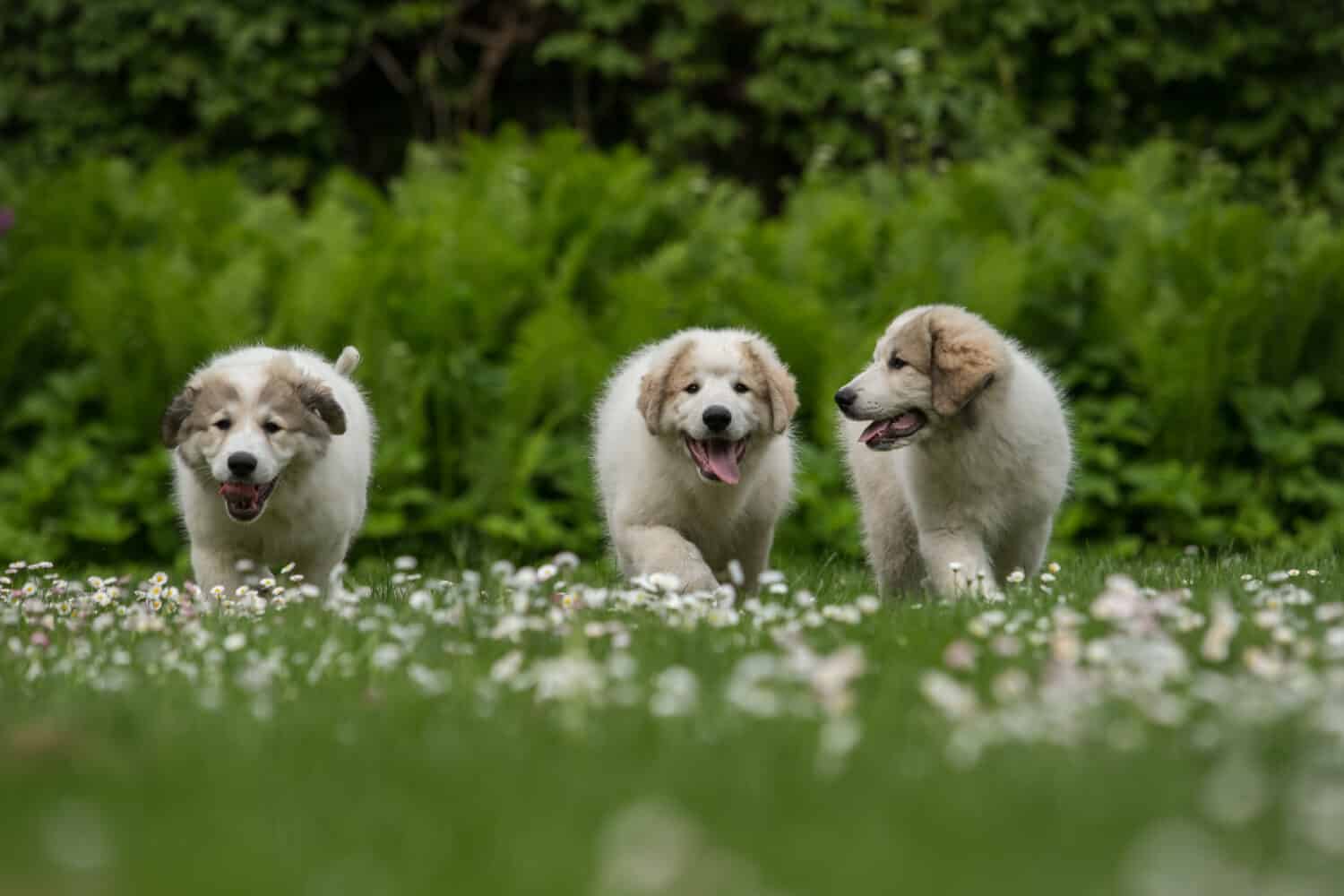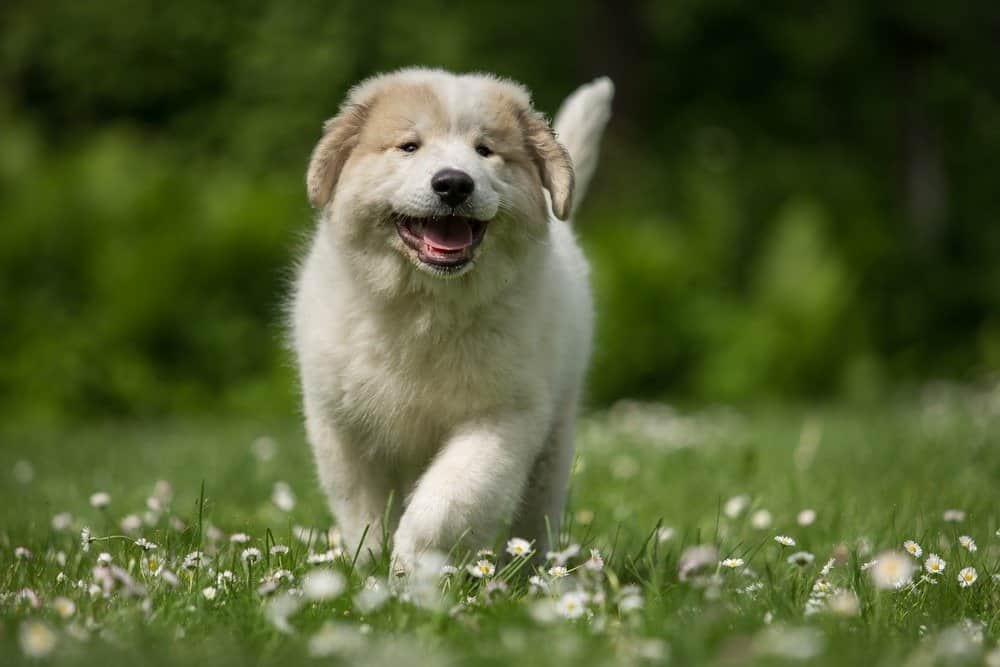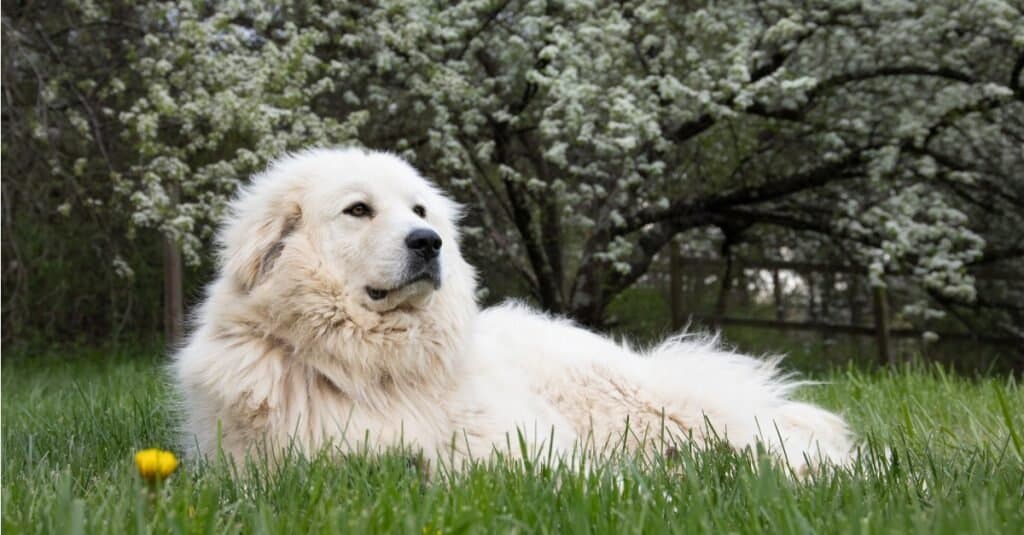Have you ever wondered what coat colors exist in the Great Pyrenees breed, and if there are rare coat colors aside from the commonly-seen, all-white coat?
All Great Pyrenees dogs are white, but some have markings of another color. Standard markings include badger, tan, gray, and reddish-brown. There is also debate as to whether or not black markings can happen in purebred Pyrs.
In this article, we’ll discuss seven Great Pyrenees coat colors from rarest to most common.
Are All Great Pyrenees White? AKC-Standard Coat Colors
The American Kennel Club (AKC) Great Pyrenees breed standard accepts both pure white coats and white coats with markings. Markings may be any of the following colors:
- Badger
- Tan
- Gray
- Reddish-brown
Great Pyrenees Colors from Rarest to Most Common
#1: White with Black Markings
There’s debate amongst Pyr experts as to whether or not purebred Great Pyrenees dogs with black markings exist. Some say yes, while others disagree.
At the very least, everyone agrees that a black and white Great Pyrenees is very rare! The more black in a dog’s coat, the rarer coloring they have.
Some Pyrs are referred to as salt and pepper, and they have a small number of black markings. Others have black markings covering ⅓ or more of the coat.
Sometimes, a black and white Pyr may develop more black markings as they age.
#2: Full Badger
Puppies can also be born with full badger coats, which means their coats are gray, tan, and sometimes black. However, their coats typically fade to white or mostly white as they age.
This is very rare to find, and doesn’t last into adulthood–so, there’s not really a point to breed for or seek out this coat color.
#3: White with Badger Markings

Badger markings are gray, tan, and sometimes black.
©DTeibe Photography/Shutterstock.com
This is the rarest standard coat color. Dogs will have mostly-white coats with badger markings, often on the face and throughout the coat.
It’s common for the badger markings to fade as the dog ages, becoming lighter or even fading to white.
#4: White with Gray Markings
Gray markings are common for Great Pyrenees dogs. They’re most commonly seen on the ears, face, and throughout the body.
#5: White with Reddish-Brown Markings
Reddish-brown markings can range in color from light to dark. They’re distinguishable from tan markings due to their reddish hue.
#6: White with Tan Markings

Markings are usually spotted on the Pyr’s body, face, and ears.
©DTeibe Photography/Shutterstock.com
Tan markings can range from a light lemon color to a dark brown. As with all markings, a face mask is common as are patches throughout the rest of the body. Most of the coat will be white.
Dogs with orange markings also count as “tan” according to the AKC breed standard, though some breeders and organizations consider it a color of its own.
#7: Solid White

The most common coat color in Great Pyrenees dogs is solid white.
©iStock.com/JZHunt
Pure white is the most common coat color for Great Pyrenees dogs. Some pups who are born with markings even end up white as adults when their coloring fades.
Do Great Pyrenees Dogs Change Color?
Your Great Pyrenees’ coat color may change as they grow. It’s said that black and white Pyr coats sometimes darken with age, developing more black patches.
Badger markings, on the other hand, commonly fade by around seven months of age. It’s rare to see an adult Pyr with dark badger markings.
If coat color is important to you, ask your breeder to see adult dogs from their line. They can show you photos of what the dogs looked like as puppies, and what they look like now. The parent dogs can also give you an indication of what your puppy may look like as an adult.
However, don’t shop with breeders who are too invested in coat color–health and temperament should always come first.
Does Coat Color Matter?
Coat color only matters if you care about your dog’s appearance. It doesn’t impact their temperament or health.
It’s also a red flag if your breeder is focused primarily on coat color or if they sell “rare” puppies for a higher price tag.
Reputable breeders home puppies based on personality and which family is the best fit. Many won’t even allow you to choose a puppy since they know their dogs best, and want to ensure a perfect match!
I hope you’ve enjoyed this list of Great Pyrenees coat colors. Remember that coat color isn’t everything, and to always research breeds thoroughly before committing to a cute pup!
Thank you for reading! If you have feedback on this post, please contact the AZ Animals editorial team.
Ready to discover the top 10 cutest dog breeds in the entire world?
How about the fastest dogs, the largest dogs and those that are -- quite frankly -- just the kindest dogs on the planet? Each day, AZ Animals sends out lists just like this to our thousands of email subscribers. And the best part? It's FREE. Join today by entering your email below.
Thank you for reading! Have some feedback for us? Contact the AZ Animals editorial team.








